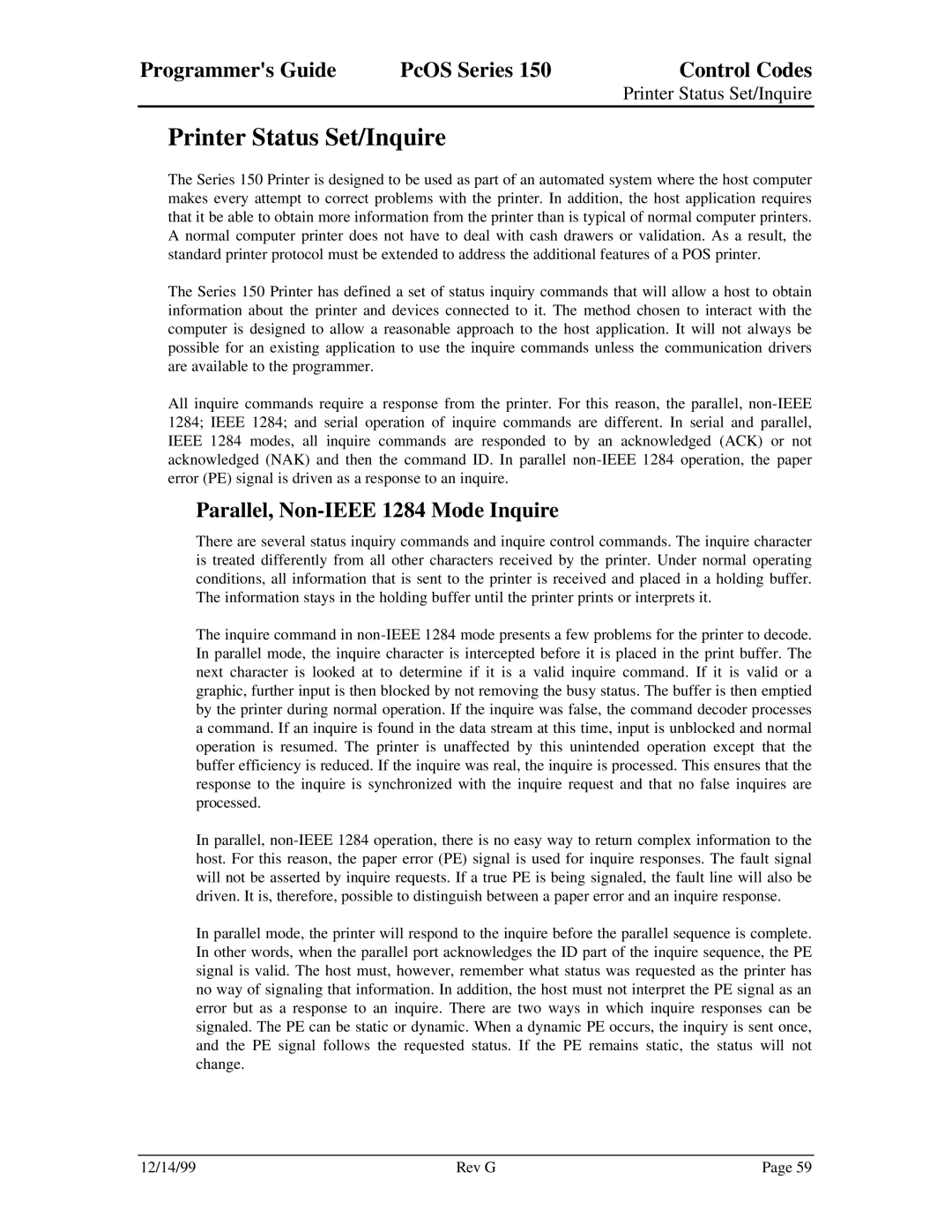Programmer's Guide | PcOS Series 150 | Control Codes |
|
| Printer Status Set/Inquire |
Printer Status Set/Inquire
The Series 150 Printer is designed to be used as part of an automated system where the host computer makes every attempt to correct problems with the printer. In addition, the host application requires that it be able to obtain more information from the printer than is typical of normal computer printers. A normal computer printer does not have to deal with cash drawers or validation. As a result, the standard printer protocol must be extended to address the additional features of a POS printer.
The Series 150 Printer has defined a set of status inquiry commands that will allow a host to obtain information about the printer and devices connected to it. The method chosen to interact with the computer is designed to allow a reasonable approach to the host application. It will not always be possible for an existing application to use the inquire commands unless the communication drivers are available to the programmer.
All inquire commands require a response from the printer. For this reason, the parallel,
Parallel, Non-IEEE 1284 Mode Inquire
There are several status inquiry commands and inquire control commands. The inquire character is treated differently from all other characters received by the printer. Under normal operating conditions, all information that is sent to the printer is received and placed in a holding buffer. The information stays in the holding buffer until the printer prints or interprets it.
The inquire command in
In parallel,
In parallel mode, the printer will respond to the inquire before the parallel sequence is complete. In other words, when the parallel port acknowledges the ID part of the inquire sequence, the PE signal is valid. The host must, however, remember what status was requested as the printer has no way of signaling that information. In addition, the host must not interpret the PE signal as an error but as a response to an inquire. There are two ways in which inquire responses can be signaled. The PE can be static or dynamic. When a dynamic PE occurs, the inquiry is sent once, and the PE signal follows the requested status. If the PE remains static, the status will not change.
12/14/99 | Rev G | Page 59 |
